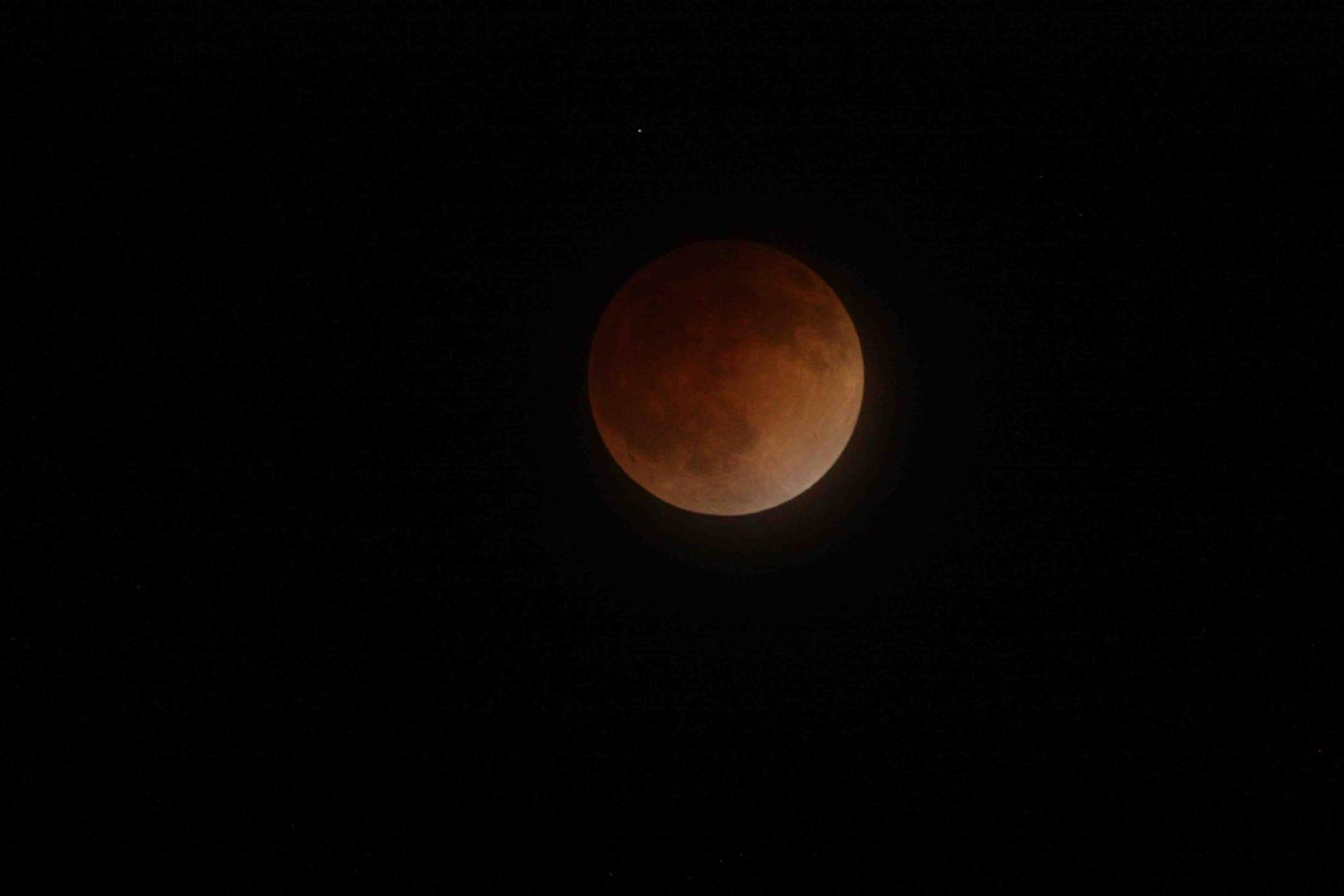
NASA Ames Research Center/Brian Day
Date:
This Wednesday, the full moon takes a 6-hour slide through the Earth’s shadow starting at 4:47 am ET. Even though it is a total lunar eclipse, observers on the East Coast of the U.S. will see vanishingly little because the moon sets in the west just before any color begins to show. The brightening pre-dawn sky will also dilute any trace of color. Observers farther west will see more of the eclipse before sunrise; those farther east will see just the brilliant full moon. This time, the most uninhabited stretch of the planet, the Pacific Ocean, gets the front row seats for the event. If skies are clear, viewers from California to Australia will see the full moon take on a tannish, coppery color as Luna traverses the Earth’s shadow. Here's an excellent description of the event.
Image: Total lunar eclipse on April 15, 2014 | NASA Ames Research Center/Brian Day


